Balkinization
an unanticipated consequence of
Jack M. Balkin
Balkinization Symposiums: A Continuing List
E-mail:
Jack Balkin:
jackbalkin at yahoo.com
Bruce Ackerman
bruce.ackerman at yale.edu
Ian Ayres
ian.ayres at yale.edu
Corey Brettschneider
corey_brettschneider at brown.edu
Mary Dudziak
mary.l.dudziak at emory.edu
Joey Fishkin
joey.fishkin at gmail.com
Heather Gerken heather.gerken at yale.edu
Abbe Gluck abbe.gluck at yale.edu
Mark Graber
mgraber at law.umaryland.edu
Stephen Griffin
sgriffin at tulane.edu
Jonathan Hafetz
jonathan.hafetz at shu.edu
Jeremy Kessler
jkessler at law.columbia.edu
Andrew Koppelman
akoppelman at law.northwestern.edu
Marty Lederman
msl46 at law.georgetown.edu
Sanford Levinson
slevinson at law.utexas.edu
David Luban
david.luban at gmail.com
Gerard Magliocca
gmaglioc at iupui.edu
Jason Mazzone
mazzonej at illinois.edu
Linda McClain
lmcclain at bu.edu
John Mikhail
mikhail at law.georgetown.edu
Frank Pasquale
pasquale.frank at gmail.com
Nate Persily
npersily at gmail.com
Michael Stokes Paulsen
michaelstokespaulsen at gmail.com
Deborah Pearlstein
dpearlst at yu.edu
Rick Pildes
rick.pildes at nyu.edu
David Pozen
dpozen at law.columbia.edu
Richard Primus
raprimus at umich.edu
K. Sabeel Rahmansabeel.rahman at brooklaw.edu
Alice Ristroph
alice.ristroph at shu.edu
Neil Siegel
siegel at law.duke.edu
David Super
david.super at law.georgetown.edu
Brian Tamanaha
btamanaha at wulaw.wustl.edu
Nelson Tebbe
nelson.tebbe at brooklaw.edu
Mark Tushnet
mtushnet at law.harvard.edu
Adam Winkler
winkler at ucla.edu
Compendium of posts on Hobby Lobby and related cases
The Anti-Torture Memos: Balkinization Posts on Torture, Interrogation, Detention, War Powers, and OLC
The Anti-Torture Memos (arranged by topic)
Recent Posts
The Radical Fund Behind Brown
Just A Few Blogs
ACS Blog
Alas, a Blog
Althouse
Arts and Letters Daily
Atrios (Eschaton)
Bill of Health
Buzzflash.com
Buzz Machine
Cato at Liberty
Juan Cole (Informed Comment)
Concurring Opinions
The Constitution in 2020
Corrente
Crooked Timber
Daily Howler
Daily Kos
Dana Boyd
Brad DeLong
Digby (Hullabaloo)
Discriminations
Daniel Drezner
Kevin Drum (Mother Jones)
Electrolite
En Banc
Eunomia (Daniel Larison)
Fafblog
Michael Froomkin (Discourse.net)
GovLab (Beth Noveck)
Rick Hasen (Election Law)
History News Network
How Appealing
Ignatz (Sam Heldman)
The Importance of (Ernie Miller)
Infolaw
Instapundit
International Economic Law and Policy Blog
IntLawGrrls
Jacob Levy
Jesus' General
Jurisdynamics
The Kitchen Cabinet
Mark Kleiman
Law Blog Central
Larry Lessig
Lawyers, Guns and Money
Liberal Oasis
Brian Leiter's Law School Reports
The Leiter Reports
Marginal Revolution
Megan McArdle
Memeorandum
Metafilter
Mirror of Justice
The New Republic
Newseum
No More Mister Nice Blog
Brendan Nyhan
Opinio Juris
Orcinus
The Originalism Blog
Pandagon
Passport (Foreign Policy)
Overcoming Bias
Political Animal (Washington Monthly)
Political Theory Daily Review
Political Wire (Taegan Goddard)
The Poor Man
Virginia Postrel
Prawfsblawg
Public Reason
Jonathan Rauch
Raw Story
Redstate
ReligiousLeftLaw.com
Reporters Committee For Freedom of the Press
Reproductive Rights Blog
Rothman's Roadmap to the Right of Publicity
SCOTUS Blog
Seeing the Forest
Clay Shirky
The Shifted Librarian
The Situationist
Larry Solum (Legal Theory)
Andrew Sullivan
Talking Points Memo
Talk Left
Tapped
Tbogg
TechPresident
The Paper Chase (Jurist)
Tom Paine
Tom Tomorrow (This Modern World)
Eve Tushnet
Uggabugga
University of Chicago Law School Faculty Blog
Unqualified Offerings
The Volokh Conspiracy
War and Piece (Laura Rozen)
Wampum
Oliver Willis
Wonkette
Written Description
Matthew Yglesias
Yin
Your Choice of Feeds
1. XML
powered by
2. Atom Feed
3. RSS 2.0
The Radical Fund Behind Brown
Guest Blogger
For the Balkinization symposium on John Witt, The Radical Fund: How a Band of Visionaries and a Million Dollars Upended America (Simon and Schuster, 2025). Michelle Adams
John Fabian Witt’s terrific new book, The Radical
Fund: How a Band of Visionaries and a Million Dollars Upended America, explores
critical and urgent moral terrain—the “distinctly modern struggle for
democratic power.” Witt tells a powerful and underappreciated story of the
extraordinary experiment of the American Fund for Public Service—the so-called
Garland Fund—and its wager that radical philanthropy might become a lever for
social transformation. The story opens with Charles Garland’s decision in 1920 to
give away the inheritance he deemed morally tainted. Roger Baldwin, soon to be
the founder of the ACLU, convinced Garland that his money could seed “a gamble
in human nature,” an experiment in the uses of wealth for democracy. Baldwin
envisioned the Fund not as a conventional foundation but as an engine for
“fundamental transformations”—a tool to challenge “the present means of
producing and distributing wealth.” Baldwin thought the central question of the
time was “how to build democracy for an immense, racial divided country in the
age of inequality, mass production, and mass communications.” Sound familiar? For many readers, the Garland Fund may have been only a faint
historical footnote. If they had heard of it at all, it was likely because its
dollars helped finance Nathan Margold’s audacious blueprint for the NAACP’s
legal campaign against the “unequal and inequitable distribution of public
school funds as between the races.” Before arriving at the NAACP, Margold had already seen how legal
rights could be nullified by administrative neglect while representing Pueblo
Indian tribes in New Mexico, where federal promises on paper were routinely
violated in practice. That experience convinced him that democracy was not merely
a matter of law but of governance — who controlled budgets,
bureaucracies, and enforcement. So after Felix Frankfurter steered him toward
the NAACP, Margold drafted a blueprint that aimed not simply to attack
segregation in court but to restructure
the machinery of southern education itself. Or, as W.E.B. Du Bois put it,
“the real discrimination comes in the administration of these general laws.” Margold’s
plan,” Witt writes, “substituted a flimsy right to integrated schooling for the
more important goal of a decent education.” Witt reminds us that for Margold, the goal was never
integration for its own sake but transformation of the institutions that made
equality possible. On page 432, he explains that Margold’s plan “substituted”
the language of integration with a deeper structural demand—to expose the
fiscal and moral bankruptcy of separate school systems by forcing states to
meet the true costs of their inequality. Integration, in this view, was not a
destination but a strategy: a way to make the republic confront the economic
and administrative foundations of segregation itself. The aim was not simply to
share space. “By attending to institutional structure,” Witt writes, “Margold
aimed to advance the project of recouping Black people’s own tax dollars.” After Margold came Charles Hamilton Houston. Like Margold before him, Houston drew directly on Garland
Fund dollars. Traveling to Black colleges around the country, Houston told
prospective law students he was building a laboratory for social change. “The
Negro lawyer,” he explained in 1929, “must be trained as a social engineer.” Houston
built Howard University Law School as a space where professional training would
allow Black lawyers—like Thurgood Marshall—to “manage his community’s
advancement.” The Fund’s ideological divisions sometimes ran deeper than
strategy. Witt recounts that one Communist member went so far as to call
Charles Hamilton Houston an “Uncle Tom,” a charge that revealed just how wide
the gulf had grown between the Fund’s various left-wing factions. For the
Communists, Houston’s emphasis on education, litigation, and institutional
reform looked like accommodation; for Houston, it was the only path to durable
change. The Fund’s internal debates foreshadowed a broader reckoning. In the
early 1930s, the crises of race, class, and ideology would collide in Alabama. The trials of nine Black
teenagers falsely accused of rape revealed that reasoned legal argument alone
could not penetrate the racial order. As Houston told a Howard audience in
1935, Scottsboro “introduced the Negro to the possibilities and tactics of mass
pressure” and “changed the emphasis of the Negro question from law to class.” The school segregation cases have often been read as a
middle-class project—the work of elite lawyers, funded by philanthropy, seeking
respectability through the courts. A
related critique is that those cases and Brown itself – grounded in
“legal liberalism” – didn’t accomplish much worth celebrating. Or, as Witt characterizes
it, “the joint NAACP-America Fund campaign, charged the critics, substituted
courthouse triumphs for transformative change.” It is long past time to retire these
understandings. These facile characterizations of one of the important
legal struggles of the 20th century are just that, facile. The
Radical Fund shows us that
in order to understand that litigation campaign one must also consider: James
Weldon Johnson, Scottsboro, Native American land claims, The Brookwood Labor College,
A. Phillip Randolph and The Brotherhood of Sleeping Car Porters. Social change
necessarily involves complexity; it is iterative, entrepreneurial and
interdependent. Witt explains this powerfully on pages 378 and 379: If Johnson and [Walter]
White were right, they explained, then empowering the Black worker was ‘bound
up with all of the major problems in which this Fund is interested: the
problems of labor; wages and income, democracy, wealth and privilege,’ and
more. None of these issues could be understood let alone resolved without
reference to ‘the plight of the Negro.’ That was the lesson of the Sweet case,
where the Fund’s support for the rights of a Black family in rapidly integrating
Detroit had struck a blow for Black migrants’ rights to participate in the
economic life of the city. The Pullman porters case weighed on the men’s minds,
too, for though the porters’ effort had not been ‘a dead loss,’ it had also not
been ‘as successful as had been hoped.’ Donating money to ‘legal labor
organizations,’ they explained, seemed insufficient, in part because the field
of such organizations had grown too vast. In any event, ‘the Negro does not dare
organize today,’ Johnson and White continued, and ‘mere money’ could ‘do little’
to change that brute fact. The Committee on Negro Work therefore proposed a
campaign run by the NAACP that would aim to alter the situation, ‘creating a
psychological atmosphere favorable to bold, aggressive action.’ The campaign
would be the very opposite of the Black Belt thesis. It would take advantage of
all that the Fund and its members had learned about democratic change in the
age of mass industry. And unlike the proposals of the Communist left, it would
be doable. The Radical Fund provides a genealogy of Brown v. Board of
Education that reaches far beyond the courtroom. Witt situates the
decision within a half-century experiment in democratic learning. The Fund’s
directors, he reminds us, “believed that American democracy, if it had ever
existed, disserved those who had the least” and that its institutions “needed
to be radically remade for the modern age.” As I read Witt’s narrative, I was reminded how easily we
forget the infrastructures beneath social change. The Radical Fund restores
them. It shows that before Brown, before the Warren Court, there
was a small, fractious community of idealists who believed democracy had to be
taught—and financed. Their experiment in radical giving linked race, labor,
education, and law into a single project. In our own era—an age of inequality and disinformation not unlike
the 1920s—The Radical Fund reads
as an invitation to reconsider what democratic education still demands: not
only schools and courts, but courage, organization, and the imagination to
build anew. Michelle Adams is Henry M. Butzel Professor of Law at Michigan Law School. You can reach her by e-mail at michadam@umich.edu.
Posted
9:30 AM
by Guest Blogger [link]
Books by Balkinization Bloggers

Linda C. McClain and Aziza Ahmed, The Routledge Companion to Gender and COVID-19 (Routledge, 2024)

David Pozen, The Constitution of the War on Drugs (Oxford University Press, 2024)

Jack M. Balkin, Memory and Authority: The Uses of History in Constitutional Interpretation (Yale University Press, 2024)
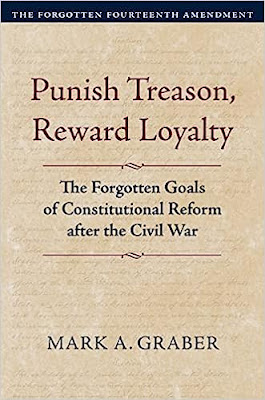
Mark A. Graber, Punish Treason, Reward Loyalty: The Forgotten Goals of Constitutional Reform after the Civil War (University of Kansas Press, 2023)
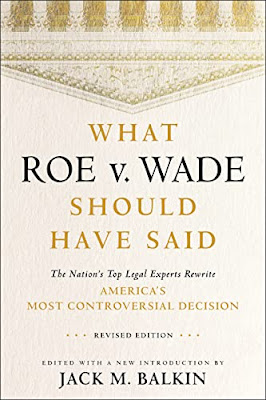
Jack M. Balkin, What Roe v. Wade Should Have Said: The Nation's Top Legal Experts Rewrite America's Most Controversial Decision - Revised Edition (NYU Press, 2023)

Andrew Koppelman, Burning Down the House: How Libertarian Philosophy Was Corrupted by Delusion and Greed (St. Martin’s Press, 2022)

Gerard N. Magliocca, Washington's Heir: The Life of Justice Bushrod Washington (Oxford University Press, 2022)
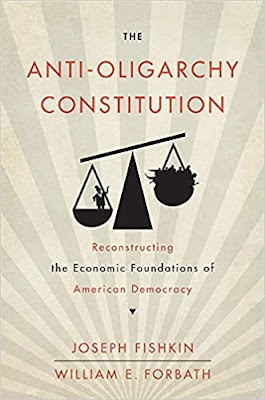
Joseph Fishkin and William E. Forbath, The Anti-Oligarchy Constitution: Reconstructing the Economic Foundations of American Democracy (Harvard University Press, 2022)
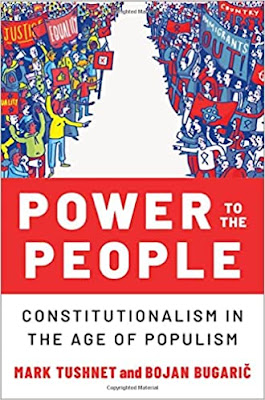
Mark Tushnet and Bojan Bugaric, Power to the People: Constitutionalism in the Age of Populism (Oxford University Press 2021).

Mark Philip Bradley and Mary L. Dudziak, eds., Making the Forever War: Marilyn B. Young on the Culture and Politics of American Militarism Culture and Politics in the Cold War and Beyond (University of Massachusetts Press, 2021).

Jack M. Balkin, What Obergefell v. Hodges Should Have Said: The Nation's Top Legal Experts Rewrite America's Same-Sex Marriage Decision (Yale University Press, 2020)

Frank Pasquale, New Laws of Robotics: Defending Human Expertise in the Age of AI (Belknap Press, 2020)

Jack M. Balkin, The Cycles of Constitutional Time (Oxford University Press, 2020)

Mark Tushnet, Taking Back the Constitution: Activist Judges and the Next Age of American Law (Yale University Press 2020).

Andrew Koppelman, Gay Rights vs. Religious Liberty?: The Unnecessary Conflict (Oxford University Press, 2020)

Ezekiel J Emanuel and Abbe R. Gluck, The Trillion Dollar Revolution: How the Affordable Care Act Transformed Politics, Law, and Health Care in America (PublicAffairs, 2020)

Linda C. McClain, Who's the Bigot?: Learning from Conflicts over Marriage and Civil Rights Law (Oxford University Press, 2020)
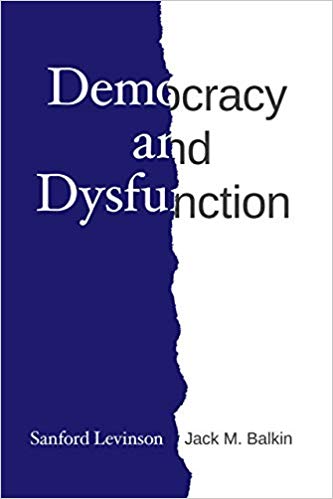
Sanford Levinson and Jack M. Balkin, Democracy and Dysfunction (University of Chicago Press, 2019)

Sanford Levinson, Written in Stone: Public Monuments in Changing Societies (Duke University Press 2018)

Mark A. Graber, Sanford Levinson, and Mark Tushnet, eds., Constitutional Democracy in Crisis? (Oxford University Press 2018)

Gerard Magliocca, The Heart of the Constitution: How the Bill of Rights became the Bill of Rights (Oxford University Press, 2018)

Cynthia Levinson and Sanford Levinson, Fault Lines in the Constitution: The Framers, Their Fights, and the Flaws that Affect Us Today (Peachtree Publishers, 2017)

Brian Z. Tamanaha, A Realistic Theory of Law (Cambridge University Press 2017)

Sanford Levinson, Nullification and Secession in Modern Constitutional Thought (University Press of Kansas 2016)

Sanford Levinson, An Argument Open to All: Reading The Federalist in the 21st Century (Yale University Press 2015)

Stephen M. Griffin, Broken Trust: Dysfunctional Government and Constitutional Reform (University Press of Kansas, 2015)

Frank Pasquale, The Black Box Society: The Secret Algorithms That Control Money and Information (Harvard University Press, 2015)

Bruce Ackerman, We the People, Volume 3: The Civil Rights Revolution (Harvard University Press, 2014)
Balkinization Symposium on We the People, Volume 3: The Civil Rights Revolution

Joseph Fishkin, Bottlenecks: A New Theory of Equal Opportunity (Oxford University Press, 2014)

Mark A. Graber, A New Introduction to American Constitutionalism (Oxford University Press, 2013)

John Mikhail, Elements of Moral Cognition: Rawls' Linguistic Analogy and the Cognitive Science of Moral and Legal Judgment (Cambridge University Press, 2013)

Gerard N. Magliocca, American Founding Son: John Bingham and the Invention of the Fourteenth Amendment (New York University Press, 2013)

Stephen M. Griffin, Long Wars and the Constitution (Harvard University Press, 2013)

Andrew Koppelman, The Tough Luck Constitution and the Assault on Health Care Reform (Oxford University Press, 2013)

James E. Fleming and Linda C. McClain, Ordered Liberty: Rights, Responsibilities, and Virtues (Harvard University Press, 2013)
Balkinization Symposium on Ordered Liberty: Rights, Responsibilities, and Virtues

Andrew Koppelman, Defending American Religious Neutrality (Harvard University Press, 2013)

Brian Z. Tamanaha, Failing Law Schools (University of Chicago Press, 2012)

Sanford Levinson, Framed: America's 51 Constitutions and the Crisis of Governance (Oxford University Press, 2012)

Linda C. McClain and Joanna L. Grossman, Gender Equality: Dimensions of Women's Equal Citizenship (Cambridge University Press, 2012)

Mary Dudziak, War Time: An Idea, Its History, Its Consequences (Oxford University Press, 2012)

Jack M. Balkin, Living Originalism (Harvard University Press, 2011)

Jason Mazzone, Copyfraud and Other Abuses of Intellectual Property Law (Stanford University Press, 2011)

Richard W. Garnett and Andrew Koppelman, First Amendment Stories, (Foundation Press 2011)

Jack M. Balkin, Constitutional Redemption: Political Faith in an Unjust World (Harvard University Press, 2011)

Gerard Magliocca, The Tragedy of William Jennings Bryan: Constitutional Law and the Politics of Backlash (Yale University Press, 2011)

Bernard Harcourt, The Illusion of Free Markets: Punishment and the Myth of Natural Order (Harvard University Press, 2010)

Bruce Ackerman, The Decline and Fall of the American Republic (Harvard University Press, 2010)
Balkinization Symposium on The Decline and Fall of the American Republic

Ian Ayres. Carrots and Sticks: Unlock the Power of Incentives to Get Things Done (Bantam Books, 2010)

Mark Tushnet, Why the Constitution Matters (Yale University Press 2010)
Ian Ayres and Barry Nalebuff: Lifecycle Investing: A New, Safe, and Audacious Way to Improve the Performance of Your Retirement Portfolio (Basic Books, 2010)
.jpg)
Jack M. Balkin, The Laws of Change: I Ching and the Philosophy of Life (2d Edition, Sybil Creek Press 2009)

Brian Z. Tamanaha, Beyond the Formalist-Realist Divide: The Role of Politics in Judging (Princeton University Press 2009)
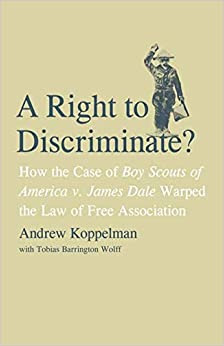
Andrew Koppelman and Tobias Barrington Wolff, A Right to Discriminate?: How the Case of Boy Scouts of America v. James Dale Warped the Law of Free Association (Yale University Press 2009)

Jack M. Balkin and Reva B. Siegel, The Constitution in 2020 (Oxford University Press 2009)
Heather K. Gerken, The Democracy Index: Why Our Election System Is Failing and How to Fix It (Princeton University Press 2009)

Mary Dudziak, Exporting American Dreams: Thurgood Marshall's African Journey (Oxford University Press 2008)

David Luban, Legal Ethics and Human Dignity (Cambridge Univ. Press 2007)

Ian Ayres, Super Crunchers: Why Thinking-By-Numbers is the New Way to be Smart (Bantam 2007)

Jack M. Balkin, James Grimmelmann, Eddan Katz, Nimrod Kozlovski, Shlomit Wagman and Tal Zarsky, eds., Cybercrime: Digital Cops in a Networked Environment (N.Y.U. Press 2007)
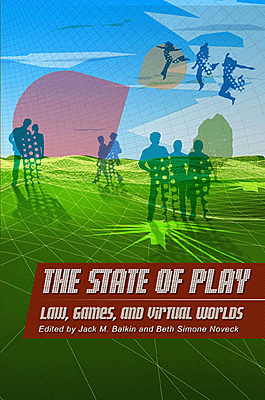
Jack M. Balkin and Beth Simone Noveck, The State of Play: Law, Games, and Virtual Worlds (N.Y.U. Press 2006)

Andrew Koppelman, Same Sex, Different States: When Same-Sex Marriages Cross State Lines (Yale University Press 2006)
Brian Tamanaha, Law as a Means to an End (Cambridge University Press 2006)
Sanford Levinson, Our Undemocratic Constitution (Oxford University Press 2006)
Mark Graber, Dred Scott and the Problem of Constitutional Evil (Cambridge University Press 2006)
Jack M. Balkin, ed., What Roe v. Wade Should Have Said (N.Y.U. Press 2005)
Sanford Levinson, ed., Torture: A Collection (Oxford University Press 2004)
Balkin.com homepage
Bibliography
Conlaw.net
Cultural Software
Writings
Opeds
The Information Society Project
BrownvBoard.com
Useful Links
Syllabi and Exams